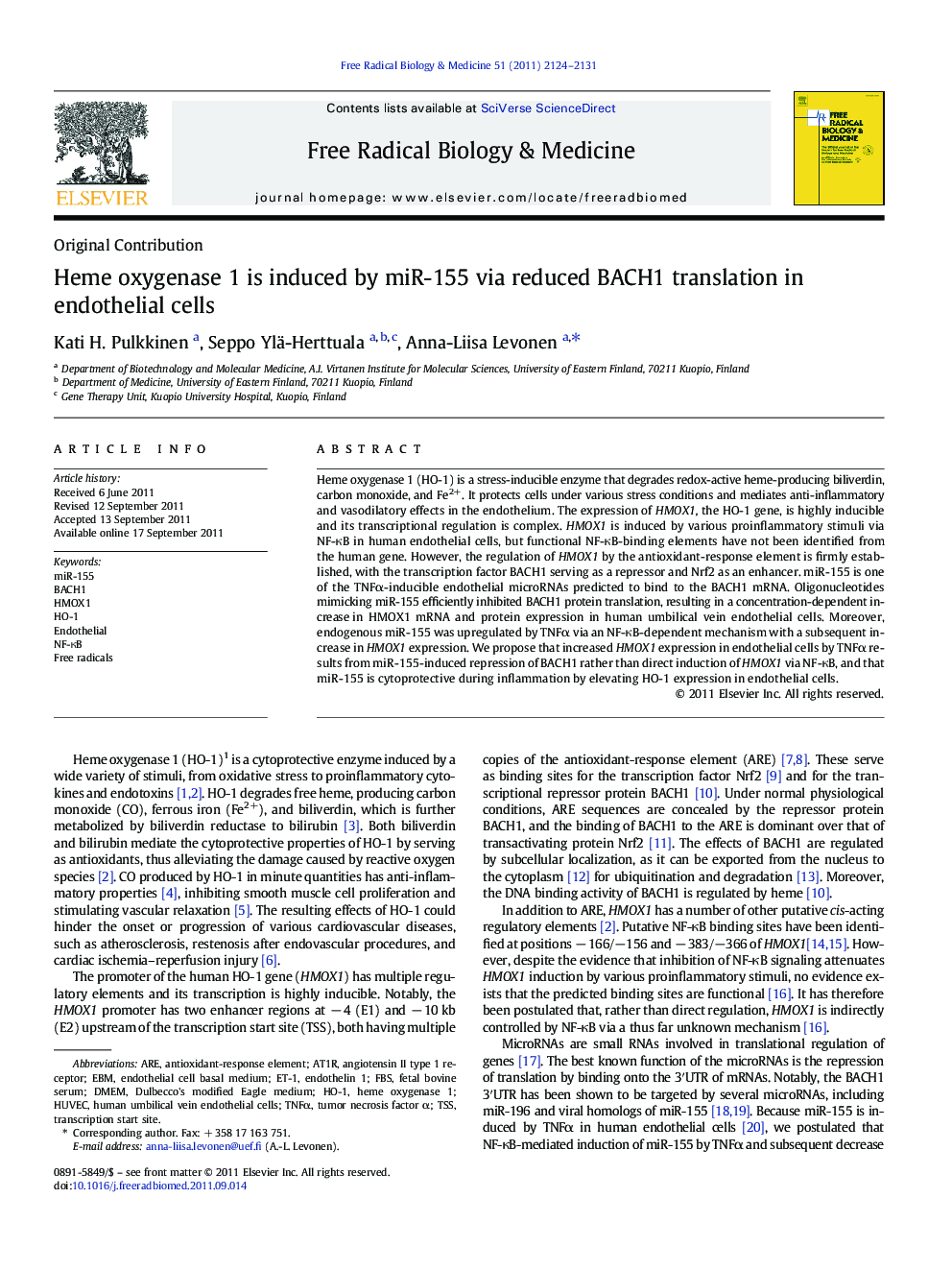| Article ID | Journal | Published Year | Pages | File Type |
|---|---|---|---|---|
| 1908921 | Free Radical Biology and Medicine | 2011 | 8 Pages |
Heme oxygenase 1 (HO-1) is a stress-inducible enzyme that degrades redox-active heme-producing biliverdin, carbon monoxide, and Fe2+. It protects cells under various stress conditions and mediates anti-inflammatory and vasodilatory effects in the endothelium. The expression of HMOX1, the HO-1 gene, is highly inducible and its transcriptional regulation is complex. HMOX1 is induced by various proinflammatory stimuli via NF-κB in human endothelial cells, but functional NF-κB-binding elements have not been identified from the human gene. However, the regulation of HMOX1 by the antioxidant-response element is firmly established, with the transcription factor BACH1 serving as a repressor and Nrf2 as an enhancer. miR-155 is one of the TNFα-inducible endothelial microRNAs predicted to bind to the BACH1 mRNA. Oligonucleotides mimicking miR-155 efficiently inhibited BACH1 protein translation, resulting in a concentration-dependent increase in HMOX1 mRNA and protein expression in human umbilical vein endothelial cells. Moreover, endogenous miR-155 was upregulated by TNFα via an NF-κB-dependent mechanism with a subsequent increase in HMOX1 expression. We propose that increased HMOX1 expression in endothelial cells by TNFα results from miR-155-induced repression of BACH1 rather than direct induction of HMOX1 via NF-κB, and that miR-155 is cytoprotective during inflammation by elevating HO-1 expression in endothelial cells.
Graphical abstractFigure optionsDownload full-size imageDownload high-quality image (211 K)Download as PowerPoint slideHighlights► TNFα induces miR-155 expression via NF-κB pathway in endothelial cells. ► miR-155 represses BACH1 protein allowing cytoprotective HMOX1 expression. ► Elevated miR-155 expression is beneficial in vascular endothelial cells.
